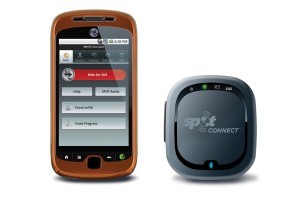- Tahoe’s Nevada Beach Tops the List of Hard-to-Book Campgrounds - 07/17/2024
- Cannabis Watershed Protection Program Cleans Up Illegal Grow Sites - 07/10/2024
- French Fire - 07/05/2024
 The sailboat bobbed in swells, our view to land obscured by a thick
The sailboat bobbed in swells, our view to land obscured by a thick
fog. It was early one morning this spring, and I was sailing along the
Californian coastline en route from San Francisco to LA. Beyond
cell-phone range, and out of touch with the world, I woke up my iPhone
and started to type.
Moments later a simple communiqué was being sent around the Earth —
“Sailing this week! Off coast of Calif.” — and with it a notation of
my precise place on the planet: 34.00024 latitude, -118.76839
longitude. Further, a link appeared with the message, which was seen
on Facebook and Twitter, where anyone interested could click to zoom
to a Google map and view in real-time my position in the Pacific Ocean
swells.
Among my arsenal of stay-in-contact communication devices, the SPOT
Connect is unique. As described above, this small device links to a
smartphone to provide a connection to a satellite network. The phone
and the SPOT communicate with each other via Bluetooth wireless
signals. Your phone is the messaging device, and the SPOT is the
uplink, a GPS communicator device that’s got a line to a network of
atmosphere-roving Globalstar satellites.
New this spring, the SPOT Connect costs $169.99 plus a required
subscription service starting at $99.99 per year. Functions include
custom messaging typed from a phone; GPS tracking; remote connection
with social-media sites and email inboxes; and, for emergencies and
rescue, an SOS function that uploads your location and a typed message
to the GEOS International Emergency Response Coordination Center.
The Connect device is small and waterproof, and there are only a
couple buttons for operation. It weighs about 5 ounces with batteries,
and it’s made with a rugged case that can withstand temps to about
minus-10 degrees F and altitudes up to 21,000 feet.
It works with Apple iPhones, iPads, and the iPod Touch as well as a
variety of phones that run the Android operating system. I downloaded
the free SPOT Connect app for my iPhone and was up and running in
minutes.
For the sailing trip, before leaving my hotel in San Francisco, I’d
logged in on my laptop to SPOT’s site (www.findmespot.com) to
designate where I wanted my remote messages sent. I selected Facebook
and Twitter, and I also pre-loaded a couple custom messages for quick
sending aboard the ship.
Like other products from SPOT LLC that work on Globalstar¹s satellite
network, there are geographic limits. Explorers in the polar regions
are generally out of luck, and much of Africa is “off line.” Big
swaths of the South Pacific and the Indian Ocean are cited as having
“reduced or no coverage.” But much of the rest of the globe is
covered.
Aboard the ship off the Californian coast, getting a signal was not an
issue. I typed on my iPhone and uplinked as our boat rocked on the
water. A tiny blinking LED on the SPOT Connect device signaled a
connection to a satellite above and, by extension via the Internet, my
remote connection to the world.
–Stephen Regenold is founder and editor of www.gearjunkie.com.
Connect with Regenold at Facebook.com/TheGearJunkie or on Twitter via
@TheGearJunkie.













